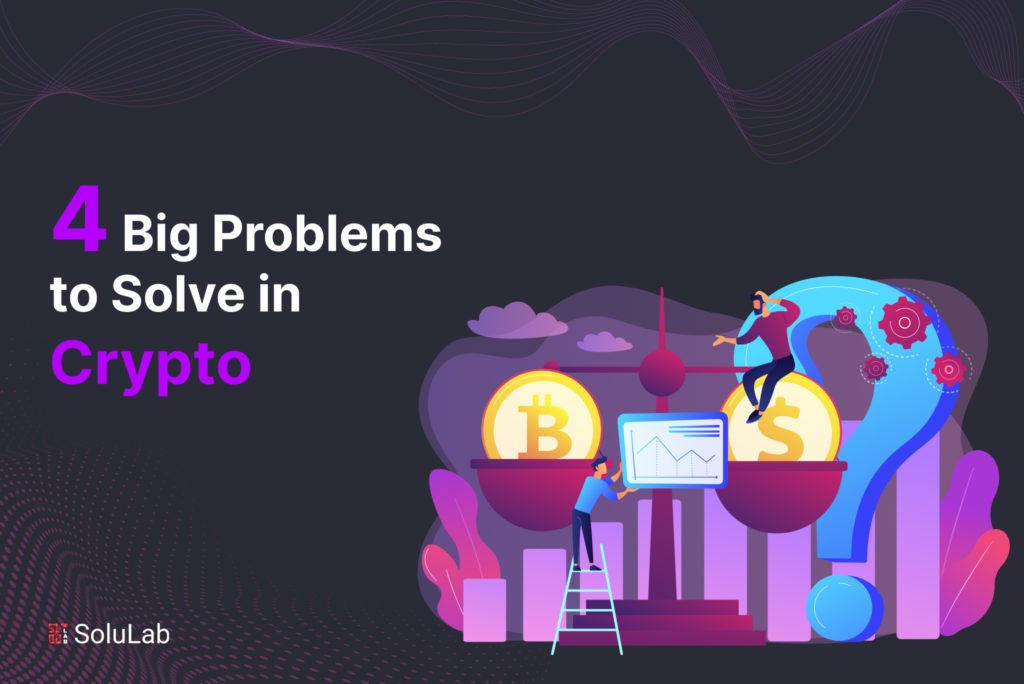
The cryptocurrency industry has grown tremendously over the past decade, evolving from a niche concept into a disruptive financial innovation. However, despite its rising popularity, the crypto sector still faces several critical challenges that must be addressed to achieve mainstream adoption.
In this blog post, we will examine four of the most pressing issues in cryptocurrency that require urgent solutions. By highlighting these challenges, we hope to spur constructive discussions on how the crypto industry can overcome obstacles and realize its full potential.
Understanding Cryptocurrency
Before diving into the specific challenges, it is essential to understand what cryptocurrency is and how it works. Cryptocurrencies like Bitcoin and Ethereum are digital assets that use cryptography and blockchain technology to enable secure peer-to-peer transactions. They operate independently of central banks and financial institutions.
Cryptocurrencies allow users to transfer value online without intermediaries. Transactions are validated and recorded on a decentralized public ledger called the blockchain. Cryptocurrencies offer an innovative approach to finance, commerce, and value storage.
Read Also: Best Crypto Wallets of 2023
Challenge #1: Lack of Understanding of What Cryptocurrency is and How It Works
Explaining the Concept of Cryptocurrency
One of the biggest roadblocks preventing mainstream cryptocurrency adoption is a need for more understanding among the general public about cryptocurrencies and their function. Surveys indicate that most people have heard about cryptocurrencies but must comprehend the technology and its potential benefits and risks.
Many must grasp complex concepts like blockchain, cryptography, decentralization, and token economics. There needs to be clarity around the differences between different cryptocurrencies and tokens. Some associate crypto with volatile speculation, which is used for payments, smart contracts, DeFi, NFTs, and more.
To address this challenge, it is crucial to educate the public about the fundamentals of cryptocurrency. Efforts should be made to simplify and demystify the technology, explaining its benefits, risks, and potential applications in a language accessible to everyone. Educational initiatives, both online and offline, can play a vital role in raising awareness and fostering a better understanding of cryptocurrencies. among the general population. This can be achieved through various means, such as informative articles, videos, workshops, and dedicated courses.
Furthermore, the collaboration between cryptocurrency projects, industry leaders, and educational institutions can help develop standardized educational materials covering cryptocurrency’s basics. These materials should explain the technical aspects and highlight real-world use cases and potential benefits for individuals and businesses.
In addition to educational efforts, addressing the misconceptions and negative stereotypes associated with cryptocurrencies is essential. Clearing up misconceptions about illegal activities, money laundering, and the overall security of cryptocurrencies can help build trust and credibility.
Read Our Blog: Top 10 Decentralized Crypto Exchanges to Consider in 2023
Moreover, governments and regulatory bodies can play a crucial role in promoting cryptocurrency education by incorporating it into school curricula and providing resources for public awareness campaigns. By integrating cryptocurrency education into mainstream education systems, we can ensure that future generations are well-equipped to understand and navigate this emerging financial landscape.
Ultimately, widespread understanding and cryptocurrency awareness will foster greater acceptance and adoption. Through education and knowledge-sharing, we can bridge the gap and pave the way for cryptocurrencies to become a part of our everyday lives.
Moreover, the collaboration between industry experts, educational institutions, and regulatory bodies can help develop comprehensive educational programs that cover topics such as blockchain technology, decentralized finance, tokenomics, and the different types of cryptocurrencies available in the market. By promoting financial literacy and providing clear and concise information, we can bridge the knowledge gap and empower individuals to make informed decisions regarding cryptocurrency usage.
The Need for Widespread Education on Cryptocurrencies
Educating the masses is crucial for cryptocurrency to gain trust and acceptance. The crypto community needs to create more user-friendly materials explaining key concepts for beginners. Simplifying technical jargon and making information accessible is vital.
Schools and colleges should consider adding cryptocurrency and blockchain technology to their curriculums. Platforms offering free crypto education can engage learners through incentives like tokens. Government awareness campaigns and celebrity endorsements can further spur public understanding.
Additionally, industry leaders and experts need to engage in educational initiatives actively. Hosting workshops, webinars, and conferences that cater to beginners and advanced users can significantly contribute to the dissemination of knowledge. These events can provide valuable insights into the latest developments, trends, and best practices in the cryptocurrency space.
To address the negative stereotypes associated with cryptocurrencies, promoting transparency and accountability within the industry is crucial. Strict regulations and guidelines can help weed out fraudulent activities and protect investors. By showcasing cryptocurrencies’ legitimate use cases and success stories, we can challenge the misconceptions and build a positive narrative around this innovative technology.
Challenge #2: Volatility
Understanding Market Volatility in Cryptocurrency
Unlike stable fiat currencies, cryptocurrencies are highly volatile assets. Their prices can fluctuate wildly within short periods. For instance, in 2021, the value of Bitcoin rose from around $30,000 to nearly $70,000 before dropping back below $33,000 by January 2022.
Such extreme volatility is driven by speculative trading, lack of regulations, and sensitivity to news or social media hype. Massive price swings hurt cryptocurrencies’ viability as stable exchange and value storage mediums. Additionally, it creates challenges for businesses and individuals looking to use cryptocurrencies for everyday transactions.
To address this challenge, market participants and regulatory bodies are working towards implementing measures that can help mitigate volatility. One approach is the development of stablecoins, which are cryptocurrencies pegged to a stable asset like fiat currency or commodities. Stablecoins aim to provide stability in value by maintaining a 1:1 ratio with the underlying asset, reducing the impact of price fluctuations.
Moreover, introducing derivatives and futures markets specific to cryptocurrencies allows traders to hedge their positions and manage risk more effectively. These financial instruments allow investors to speculate on price movements without owning the underlying cryptocurrency directly. By offering tools for risk management, derivatives markets contribute to stabilizing the overall cryptocurrency market.
Furthermore, increased regulatory oversight can help address volatility by promoting transparency and reducing market manipulation. Regulations such as know-your-customer (KYC) and anti-money laundering (AML) requirements can enhance investor protection and foster market integrity. Clear guidelines on trading practices and establishing regulatory frameworks can instill confidence in the market, attracting more institutional investors and reducing the influence of speculative trading.
Developing decentralized finance (DeFi), protocols also aims to create more stability within the cryptocurrency ecosystem. Through smart contracts, DeFi platforms offer various financial services, such as lending, borrowing, and yield farming. These protocols are designed to be transparent, autonomous, and resistant to censorship, giving users more control over their assets and reducing reliance on centralized intermediaries.
Read Our Blog Post: Blockchain Verification Process: Explained
While volatility remains a challenge, the continued efforts of industry participants, regulators, and technological advancements are gradually addressing this issue. As the cryptocurrency market matures and becomes more regulated, we can expect increased stability, making cryptocurrencies a more reliable medium of exchange and store of value. It is essential for users to stay informed and educated about the risks associated with volatility while taking advantage of the potential benefits offered by cryptocurrencies.
Ways to Cope with Crypto Market Volatility
Experts believe cryptocurrency markets will stabilize as they mature over time. But in the meantime, several measures can help cope with volatility:
- Diversifying investments across various crypto assets can balance risk.
- Using dollar cost averaging and limit orders can smooth out buying at optimal prices.
- Derivatives like futures contracts and options trading allow hedging against price changes.
- Holding stablecoins pegged to fiat can hedge volatility during downturns.
Robust crypto regulations and increased institutional adoption should also infuse stability and credibility over the long term.
Challenge #3: Lack of Regulatory Frameworks
Importance of Legal Regulations in the Crypto Sector
The cryptocurrency industry currently operates with unclear and inconsistent regulatory oversight. The decentralized nature of cryptocurrencies makes them difficult to regulate using traditional legal frameworks designed for fiat currencies and financial systems.
However, rational regulations are necessary for the crypto sector’s stability and security. They provide legitimacy alongside guardrails that protect investors and consumers. Laws also help prevent the use of cryptocurrency for illegal activities, such as money laundering and fraud. Without explicit regulatory frameworks, the industry can be susceptible to market manipulation and scams, eroding trust and hindering mainstream adoption.
Read Also: Top 10 Blockchain Platforms of 2023
To address this challenge, many countries and jurisdictions are working towards developing comprehensive regulatory frameworks tailored explicitly to cryptocurrencies and blockchain technology. These frameworks aim to balance fostering innovation and protecting market participants.
One key aspect of these regulatory efforts is the establishment of know-your-customer (KYC) and anti-money laundering (AML) requirements for cryptocurrency exchanges and service providers. By implementing robust identity verification processes, regulators can mitigate the risks associated with illicit activities and ensure a more secure environment for users.
Moreover, regulatory frameworks can provide guidelines for initial coin offerings (ICOs) and token sales, helping to distinguish between legitimate projects and fraudulent schemes. This can help investors make more informed decisions and reduce the likelihood of falling victim to scams.
In addition to protecting investors, regulations also play a crucial role in promoting market integrity. They can set standards for transparency, disclosure, and reporting, ensuring that market participants operate fairly and accountable. This can help prevent market manipulation and insider trading, ultimately fostering a healthier and more trustworthy ecosystem.
However, it is essential to strike the right balance when implementing regulations. More relaxed rules can stifle innovation and hinder the growth of the industry. Therefore, regulators must collaborate closely with industry participants to develop practical yet flexible frameworks to accommodate technological advancements and evolving market dynamics.
As the cryptocurrency industry continues to evolve, more jurisdictions are expected to establish clear regulatory frameworks. These regulations will provide much-needed stability and security and pave the way for the broader adoption of cryptocurrencies by institutions and the general public. By creating a level playing field and ensuring compliance, regulatory frameworks can contribute to the long-term success and sustainability of the crypto sector.
Current State of Regulatory Frameworks in Cryptocurrency
Many governments still need to decide how to regulate cryptocurrencies. Regulatory approaches vary from outright bans to no rules at all. Some countries only regulate banks and businesses dealing in crypto, not individuals.
Cryptocurrencies require global coordination to ensure consistency and effectiveness in regulatory efforts. International cooperation can help prevent arbitrage, where businesses move operations to jurisdictions with less stringent regulations.
One example of international collaboration in the cryptocurrency space is the Financial Action Task Force (FATF). The FATF is an intergovernmental organization that sets standards and promotes the implementation of measures to combat money laundering and terrorist financing. In 2019, the FATF issued guidance on virtual assets and virtual asset service providers, urging member countries to adopt and enforce regulations in line with their recommendations.
Some countries have taken proactive steps to establish comprehensive regulatory frameworks. For instance, Japan has implemented a licensing system for cryptocurrency exchanges, ensuring they comply with KYC and AML requirements. This has helped bolster consumer protection and strengthen market integrity in the country.
Similarly, Switzerland has emerged as a favorable destination for cryptocurrency businesses due to its clear regulatory framework. The country has established a regulatory sandbox, allowing innovative crypto projects to operate under certain conditions while complying with regulations.
On the other hand, some jurisdictions have chosen to ban or heavily restrict cryptocurrencies. China, for example, has implemented strict measures to limit cryptocurrency activities within its borders. This approach aims to mitigate risks associated with speculative trading and potential financial instability.
In the United States, regulatory oversight of cryptocurrencies falls under various agencies, including the Securities and Exchange Commission (SEC) and the Commodity Futures Trading Commission (CFTC). The SEC has focused on enforcing securities laws in the context of initial coin offerings, while the CFTC has asserted jurisdiction over certain crypto derivatives.
Amidst the evolving landscape, there is an ongoing debate about the optimal level of regulation. Some argue for a light-touch approach that allows for innovation and experimentation, while others advocate for stricter rules to protect investors and maintain market stability.
Challenge #4: Uncertainty Regarding Taxation
The Complexity of Cryptocurrency and Taxation
The novel nature of cryptocurrencies also needs clarification regarding how to tax their usage and transactions. Cryptocurrencies do not cleanly fit into existing tax structures. For example, it remains to be seen if crypto should be treated as a currency, commodity, security, or property for tax purposes.
Their volatility complicates calculating capital gains tax on cryptocurrency sold after increasing value. Tax requirements also vary substantially between countries and jurisdictions, adding to the complexity for individuals and businesses operating in cryptocurrency. The lack of clear guidelines and harmonization across borders creates uncertainty and can deter potential investors and users from fully participating in the crypto market.
One of the challenges in establishing a comprehensive taxation framework for cryptocurrencies is determining the appropriate valuation method for calculating capital gains or losses. With the highly volatile nature of cryptocurrencies, their value can fluctuate significantly within short periods. This challenges tax authorities in accurately assessing the taxable amount when a cryptocurrency is sold or exchanged.
To address these challenges, some countries have developed specific guidelines for cryptocurrency taxation. For example, the Internal Revenue Service (IRS) in the United States considers cryptocurrencies as property and applies capital gains tax rules when they are sold or exchanged. In Japan, cryptocurrencies are treated as a legal means of payment, and profits from cryptocurrency trading are subject to income tax.
Read Our Blog Post: Top 10 Layer 1 Blockchains in 2023
However, there still needs to be a global consensus on cryptocurrency taxation. This creates a fragmented landscape where individuals and businesses may face different tax obligations depending on location. As the crypto industry continues gaining mainstream adoption, regulators increasingly need to collaborate and establish more transparent and consistent guidelines on cryptocurrency taxation.
The current state of regulatory frameworks in cryptocurrency is characterized by multiple approaches, ranging from outright bans to partial regulations focused on businesses rather than individuals. The lack of international coordination and clarity regarding taxation further complicates the landscape. Governments and regulatory bodies must work together to develop comprehensive and harmonized frameworks that promote innovation, protect investors, and clarify taxation.
Possible Solutions to Crypto Taxation Uncertainty
Industry experts have called for updated international taxation guidelines and frameworks aimed at cryptocurrency. Setting clear, reasonable tax policies could help boost adoption and participation in the crypto economy. It would also allow citizens to meet tax obligations on crypto activity seamlessly.
In addition, integrating cryptocurrency into mainstream tax software and services can make filing easier for taxpayers. Overall, removing ambiguity around crypto taxes is critical for users and regulators.
Conclusion
Addressing these challenges requires concerted efforts from all stakeholders in the cryptocurrency ecosystem. With increased collaboration, education, regulation, and taxation clarity, cryptocurrency can gain mainstream traction and deliver on its full potential. The future looks bright for crypto as an innovative technology that can transform finance and global commerce.
SoluLab, a leading provider of high-end cryptocurrency development services, offers comprehensive solutions tailored to meet the diverse requirements of businesses across various industries. From initial consultation and proof-of-concept preparation to pilot development and full-fledged crypto creation, SoluLab’s team of experts efficiently manages tasks, ensuring optimal results within a short timeframe. By leveraging their uniquely crafted solutions, businesses can significantly enhance their return on investment (ROI). For top-quality cryptocurrency development solutions, businesses can rely on SoluLab’s expertise. Contact SoluLab today to explore the possibilities for your crypto venture.
FAQs
1. What are the significant challenges currently faced by the crypto sector?
The crypto sector faces several challenges, but four of the most significant ones are scalability, security, regulatory compliance, and mainstream adoption. These issues hinder the industry’s growth and require immediate attention to ensure long-term success.
2. Why is scalability a challenge in the crypto sector?
Scalability refers to the ability of a blockchain network to handle an increasing number of transactions without compromising speed and efficiency. As the popularity of cryptocurrencies grows, the existing blockchain networks, such as Bitcoin and Ethereum, face scalability issues, resulting in slow transaction processing times and high fees. This challenge requires innovative solutions to improve the scalability of blockchain networks and accommodate the rising demand.
3. How does security pose a threat to the crypto sector?
Security is a significant concern in the crypto sector due to the prevalence of hacking attempts, scams, and fraudulent activities. The decentralized nature of cryptocurrencies makes them attractive targets for malicious actors seeking to exploit vulnerabilities in exchanges, wallets, and smart contracts. Implementing robust security measures, such as multi-factor authentication and cold storage solutions, is crucial to protect users’ funds and maintain the industry’s integrity.
4. What are the regulatory challenges faced by the crypto sector?
The crypto sector operates in a rapidly evolving regulatory landscape, with countries having varying regulations or outright bans on cryptocurrencies. This lack of consistent and unambiguous rules creates uncertainty for businesses and investors, limiting the industry’s growth and innovation. To foster a healthy crypto ecosystem, the sector needs cohesive and balanced regulations addressing consumer protection, anti-money laundering (AML) concerns, and investor security.
5. Why is mainstream adoption a critical challenge for cryptocurrencies?
Achieving mainstream adoption is vital for cryptocurrencies to become widely accepted and used in everyday transactions. Currently, cryptocurrencies face barriers in terms of user-friendliness, complexity, and limited merchant acceptance. For mass adoption to occur, cryptocurrencies must offer seamless user experiences, stable prices, and easier integration with existing payment systems. Overcoming these challenges will enable cryptocurrencies to become a mainstream medium of exchange and store of value.






